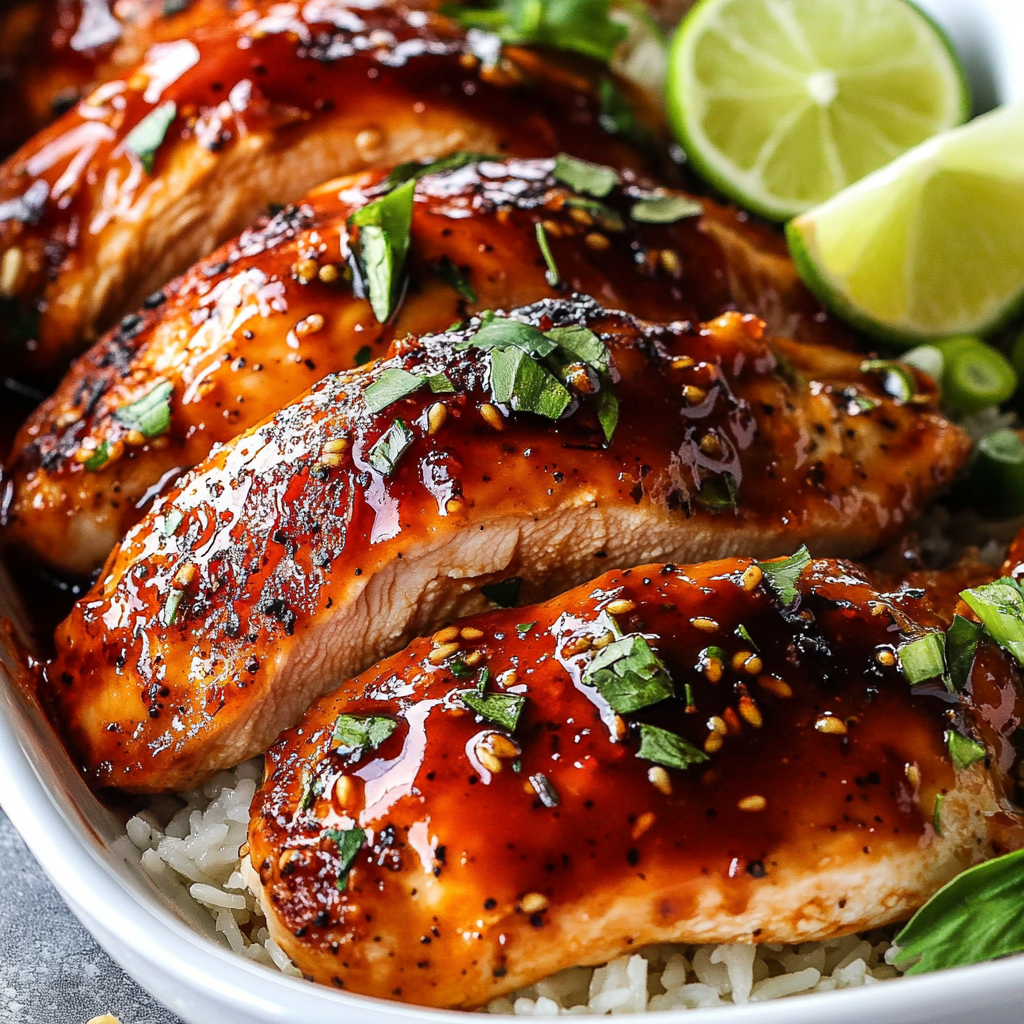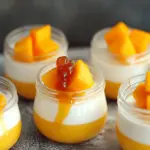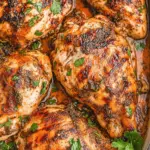Irish Potato Farls are a beloved traditional bread that combines the humble potato with simple pantry staples to create a comforting and delicious dish. The outside crisps to a golden brown while the inside remains soft and tender, making these farls perfect for breakfast or as a side to a hearty meal.
This recipe is wonderfully easy to prepare and requires just a few ingredients, yet delivers authentic flavors that evoke the warmth of Irish kitchens. Serve them slathered in butter or alongside eggs and sausages for a classic Irish breakfast experience. Their versatility also makes them great with jams or cheeses for a simple snack any time of day.
Full Recipe
Ingredients:
-
2 cups mashed potatoes (preferably leftover, cold)
-
1 1/4 cups all-purpose flour
-
1 teaspoon baking powder
-
1/2 teaspoon salt
-
Butter or oil, for frying
Directions:
-
In a large bowl, combine the mashed potatoes, flour, baking powder, and salt. Mix until a soft dough forms. If too sticky, add a little more flour.
-
Turn the dough onto a lightly floured surface and gently knead until smooth, about 1-2 minutes.
-
Divide the dough into two equal portions and flatten each into a round disc about 1/2 inch thick.
-
Cut each disc into four equal wedges (farls).
-
Heat a non-stick skillet or griddle over medium heat and add a little butter or oil.
-
Fry the farls for 3-5 minutes on each side or until golden brown and cooked through.
-
Remove from heat and serve warm, ideally with butter or alongside a full Irish breakfast.
Prep Time: 10 minutes | Cooking Time: 10 minutes | Total Time: 20 minutes
Kcal: Approximately 180 kcal per farl | Servings: 4 servings (8 farls)
The History and Tradition of Irish Potato Farls
Irish Potato Farls are a traditional staple in Irish cuisine, deeply rooted in the country’s history and culture. This simple yet satisfying bread emerged out of necessity during times when potatoes were a dietary mainstay for many Irish families. Farls originated as a practical way to stretch limited ingredients—primarily potatoes and flour—into a filling and versatile bread that could accompany various meals throughout the day.
The term “farl” comes from the Gaelic word “fardel,” meaning a quarter or a fourth, which refers to how the dough is traditionally shaped and cut into four wedges before cooking. Potato farls have been a part of Irish households for centuries, often cooked on a griddle or stovetop, making them quick and accessible for busy kitchens.
Why Potato Farls Are a Comfort Food Classic
The beauty of Irish Potato Farls lies in their simplicity. Made with basic pantry staples, their flavor and texture are nothing short of comforting. The mashed potatoes in the dough contribute moisture and softness, while the flour and baking powder provide structure and lift. When cooked on a hot griddle or skillet, the outside crisps up beautifully, creating a golden crust that contrasts with the tender, pillowy inside.
Farls have long been cherished as a companion to a traditional Irish breakfast, served alongside eggs, sausages, and black pudding. However, they are also incredibly versatile and can be enjoyed at any time of day, whether topped with butter and jam for breakfast or served as a side with soups and stews.
Versatility in Serving and Pairing
One of the reasons Irish Potato Farls have remained popular is their versatility. Because they are mild in flavor, farls can pair with both sweet and savory accompaniments. For a traditional experience, a generous pat of salted butter melting over a warm farl is heavenly. Adding honey, marmalade, or jam creates a delightful sweet snack or breakfast treat.
On the savory side, farls can be served with eggs, bacon, or smoked salmon. They also hold up well to being split and filled with sandwich ingredients or used as a bread substitute for burgers or other handheld meals. Their sturdy yet soft texture makes them perfect for soaking up hearty sauces and gravies.
Making Potato Farls: Tips for Success
When making potato farls, it’s best to use cold, leftover mashed potatoes rather than freshly mashed. This helps the dough hold together better and prevents it from becoming too sticky. The dough should be soft but manageable — if it feels too wet, adding a little extra flour will help.
Kneading the dough just enough to combine ingredients smoothly is important, but overworking it can result in tougher farls. Cutting the dough into even wedges ensures consistent cooking, and frying them on a medium heat allows the exterior to brown without burning while the inside cooks through.
Using a good non-stick pan or a traditional griddle works best, and adding butter or oil gives the farls that golden, crispy edge everyone loves. Cooking them slowly and flipping carefully will help achieve the perfect texture.
The Cultural Significance of Potato Farls Today
Today, Irish Potato Farls remain a beloved part of Irish food culture, enjoyed in homes and pubs alike. They are often associated with family traditions, holidays, and celebrations, especially St. Patrick’s Day. Many families have passed down their own recipes and tweaks, incorporating local flours or spices for subtle flavor variations.
With the rising interest in traditional and rustic cooking, potato farls have also found a new audience beyond Ireland’s shores. Food bloggers, chefs, and home cooks worldwide appreciate the ease and heritage behind this recipe, making it a wonderful introduction to Irish cuisine.
Nutritional Perspective and Dietary Considerations
From a nutritional standpoint, potato farls provide a source of carbohydrates and energy, with the potatoes offering some vitamins and minerals such as vitamin C and potassium. The simplicity of the ingredients makes it a relatively clean and wholesome bread option when made at home.
While farls are not gluten-free due to the wheat flour, they can be adapted with gluten-free flours for those with dietary restrictions, though the texture will differ slightly. Because they’re pan-fried, moderation is key for those watching fat intake, but using minimal butter or oil keeps them lighter.
Modern Twists and Variations
Though the classic potato farl recipe is cherished, many home cooks have experimented with variations. Adding herbs such as chives, parsley, or thyme brings fresh flavors. Some add cheese for richness, or incorporate whole wheat or oat flour to boost fiber.
For a slightly sweet twist, adding a pinch of sugar or cinnamon can turn farls into a breakfast treat reminiscent of sweet breads. Others have explored using sweet potatoes instead of white potatoes for a colorful and nutrient-rich version.
Why You Should Make Irish Potato Farls at Home
Making Irish Potato Farls at home is rewarding and straightforward. It requires only a few simple ingredients that many already have on hand, making it an economical and quick bread option. The hands-on process of mixing, shaping, and frying can be a fun kitchen activity, especially with family or friends.
Additionally, homemade farls taste fresher and more satisfying than store-bought breads, and you can customize them to your preferences in texture and flavor. Whether you’re seeking an authentic taste of Ireland or just a cozy bread to complement your meals, potato farls deliver on every level.
Conclusion
Irish Potato Farls are a timeless and comforting bread that perfectly showcases the simplicity and heartiness of Irish cuisine. Their history speaks to the resourcefulness and warmth of Irish cooking traditions, while their taste and texture continue to win over new generations of food lovers worldwide.
Easy to prepare, versatile in serving options, and delicious in flavor, potato farls offer a wonderful way to connect with traditional food culture and enjoy a satisfying bread experience. Whether paired with a hearty breakfast, slathered in butter, or enjoyed as a snack, these golden, soft potato breads are sure to become a favorite in any kitchen.

